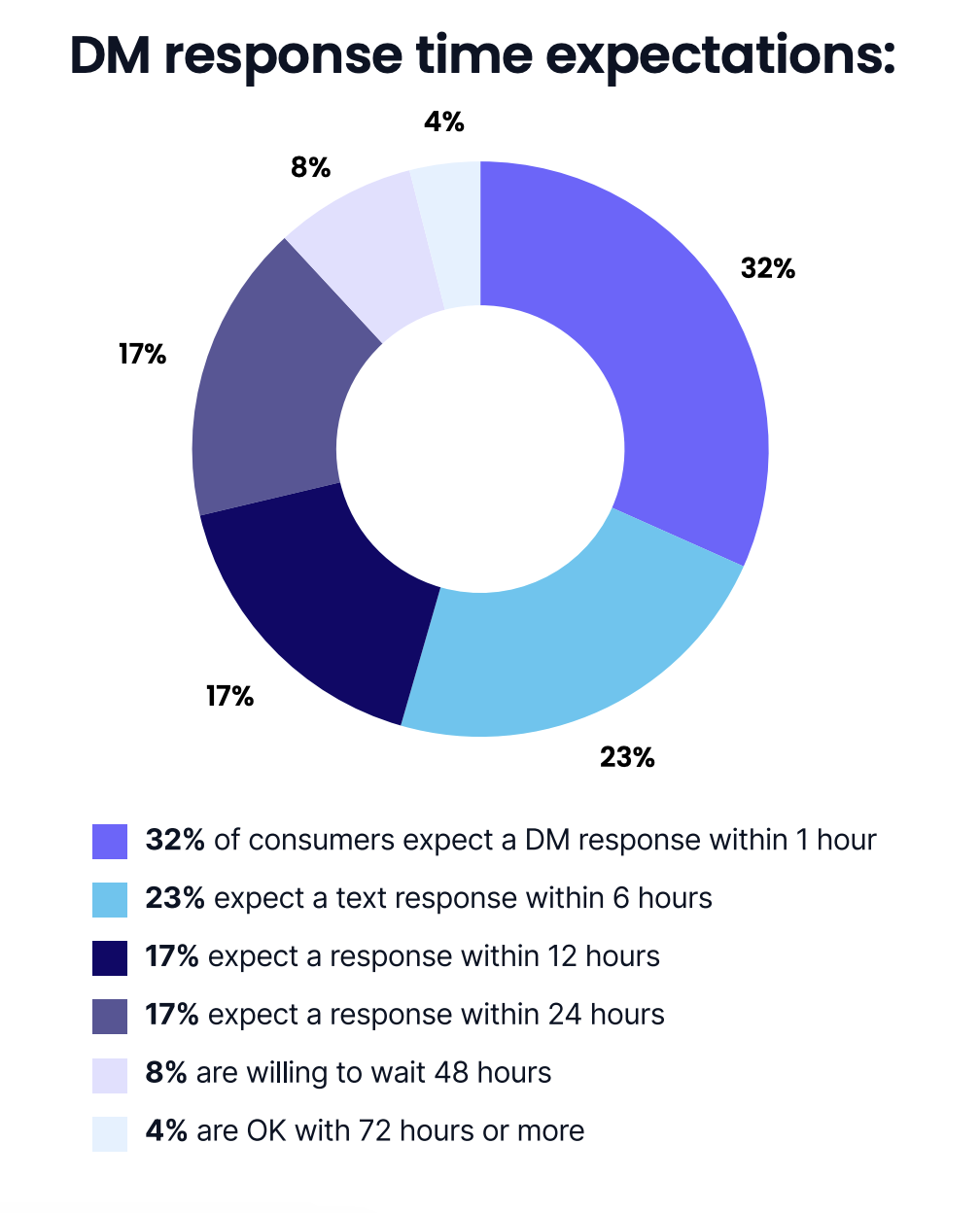In today’s retail landscape, the lines between direct-to-consumer (DTC) and traditional retail are quickly blurring, and customer expectations are shifting just as fast. Whether shoppers are browsing your website, strolling through a brick-and-mortar store, or clicking “buy now” on a third-party marketplace, they expect one thing: consistent, seamless service.
For modern brands, that means customer support can no longer be siloed by channel. Omnichannel customer service is now non-negotiable. It’s why omnichannel is at the core of what we do at Kustomer - it’s the foundation of the future of customer experience.
Keep reading as we explore recent consumer data on why omnichannel support is essential for DTC and retail brands, the risks of fragmented service, and how leading companies are creating unified experiences that win customer loyalty and drive business growth.
The convergence of DTC and physical retail
DTC brands may think they’re small enough to get away with providing simpler support options. However, DTC brands don’t always stay that way.
Many brands that started as direct-to-consumer, (such as Warby Parker, Mejuri, Ana Luisa) expand into physical retail for reach, brand experience, or logistics. The inverse is true too: legacy retailers are launching DTC-like experiences via ecommerce and mobile to appeal to a new generation of shoppers.
There are lots of places consumers can buy your products:
- Your website
- A third party retailer’s website, like a department store
- A third party marketplace website, like Amazon, Target, or Walmart
- Your storefronts
- A third party store retail storefront
And many brands will sell their products in all five of these channels! All of these pathways still lead to one thing: when a customer has an issue with your product, they may reach out to your CX team for help, regardless of if they purchased the item with you directly or not.
This convergence makes seamless, cross-channel support essential. Your brand either really needs omnichannel support today, or it’ll be important in supporting the next phase of your brand’s growth.
What customers expect today
Remember the beginning of the era when people would get ignored from a brand’s customer service, then go to social media to call out the brand to finally get help? It’s every CX leader’s worst nightmare. This happens because customers are savvy and know that brands have (or should have) the technology to handle their needs.
As a result, customers don’t differentiate between channels. They expect their issue to be resolved regardless of where it started. They may reach out to you via email once, web chat another time, and social media another time - wherever they are online when they have an issue or spark of inspiration to reach out to you.
Still, customers get frustrated when they have long delays, find it annoying when they have to repeat themselves, or have to go seek your brand out on a channel they don’t prefer - but that’s been the case for years.
Here’s some of the freshest data with consumer expectations and shopping behavior:These high expectations extend to response times. Emplifi studied consumer-brand social media engagement and found that over half of consumers expect brands to respond to social media direct messages within six hours. The clock is ticking as soon as a customer or potential customer reaches out!

According to the Global Consumer Products Engagement Report, 60% of consumers believe buying directly from a brand should cost less, and they expect better experiences in return, but only 37% of consumer packaged goods brands have fully integrated their customer experience, ERP and marketing systems.
The 2025 EY Future Consumer Index on physical and digital commerce found some key insights about how consumers are shopping. Even with the growth of e-commerce and AI powered shopping, offline retail spend still makes up 77% of purchases, and 94% of consumers make purchase decisions in-store after browsing across channels. It’s a blended shopping experience these days - people may browse in person and evaluate competitors or check reviews online, especially if they’re considering a new product or brand for the first time.
It all comes down to one thing: consumers expect information, convenience, and service at their fingertips whether they are shopping digitally or in-person. With fragmented systems, it can be hard for DTC brands to scale or handle an influx of traffic or orders.
The risk of fragmented service
When it comes to customer experience, brands are not just competing with one another. As brands scale and add in new sales channels, they’re often competing internally, thanks to disconnected systems rather than an omnichannel approach.
This leads to disconnected experiences and your brand perception suffers when agents lack context from other touchpoints. This fragmentation is a bad look and can lead to missed sales, lower loyalty, and higher support costs
Here are some ways to overcome fragmented service:
Align incentives
First, CX leaders need to work cross-functionally to mitigate the changes that the customer experience becomes fragmented as a result of lacing communication or internal employees optimizing for different outcomes. When teams work in siloes or have conflicting goals, that can result in a disjointed experience for customers.
Kait Stephens, CEO of Brij, says:
“Align incentives across your team from day one. A great example is Quip—they have DTC and retail, but both roll up into an omnichannel P&L. That way, the team is incentivized to make decisions that are best for the brand overall—not just their channel… I hear it all the time. I’ll be talking to a stakeholder, maybe on the ecommerce team, and they’ll say, ‘Oh, that’s not my P&L,’ or ‘That’s a sales team problem.’ And right away, you can tell there’s a siloed mindset. That’s a red flag If ecommerce and retail teams have separate KPIs without any alignment, they’ll make decisions that compete instead of complement. But if you roll everything up under an omnichannel view, you make better decisions for the overall business. Sometimes it’s also an education issue. Teams just need to see how the channels support each other.”
Read more from Kait on mastering modern customer journeys.
Build an omnichannel strategy
Brands looking to build an omnichannel customer service strategy often face two paths: bolting on point solutions or choosing an all-in-one platform. The bolt-on approach might seem flexible, adding in new channels over time, and only focusing on making tweaks rather than overhauling the whole stack. You may need to find purpose driven solutions and build integrations to get everything to work smoothly.
It can save a little time up front but in the long run, it usually results in siloed systems, disconnected data, and inconsistent customer experiences. Agents have to manually look across multiple tabs to get all the information and context they need.
In contrast, a comprehensive CRM and support platform like Kustomer unifies all channels, interactions, and customer data into a single timeline—empowering agents with context and enabling seamless, personalized support. Kustomer includes integrations with Shopify Plus and BigCommerce as well as many other partners supporting the whole customer journey.
Real-life examples of omnichannel DTC customer service
Making the switch to omnichannel requires a different way of operating and some up-front investment in time, but it can pay dividends for years to come. Take a look at how these DTC brands boosted their customer experience thanks to omnichannel customer support, powered by Kustomer:
Everlane was able to expand to omnichannel support with Kustomer and saved 25% of agent hours.
UNTUCKit used omnichannel and was able to reduce time spent on voice calls and improving the rates of first call resolutions, driving faster resolutions for customers
Hexclad found that thanks to great omnichannel service, customers that engage with their support team have a 21% increase in customer lifetime value.
When your agents can see all the customer communications in one place they have the context and information they need to solve problems faster with fewer followups. This enhanced experience drives consumers to come back and shop with you again.
Closing thoughts
The line between physical and digital retail is gone. As a result, omnichannel customer service isn’t now essential for meeting modern shopper expectations and future-proofing your brand. As retail and DTC continue to converge, comprehensive support across every touchpoint builds trust, drives loyalty, and increases lifetime value. Investing in unified systems and strategies today sets the stage for stronger customer relationships and long-term business success.
Ready to explore an omnichannel customer support tool? Check out the product tour or schedule time to talk with our sales team to learn how Kustomer can supercharge your brand’s customer experience!




